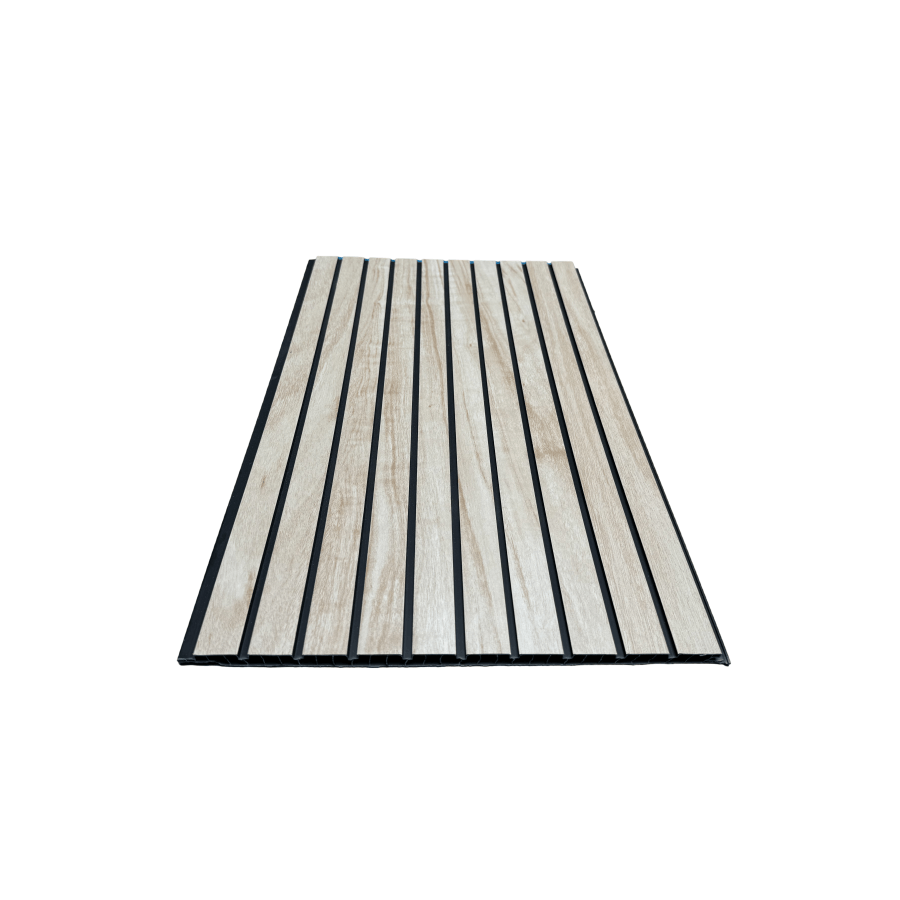Features and Benefits of WPC Louver Panels
2024-07-13
WPC (Wood-Plastic Composite) louver panels are innovative building materials that combine the natural appearance and texture of wood with the durability and low maintenance of plastic composites. Here’s an overview of WPC louver panels:
Construction and Materials:
1. Composite Structure:
- Wood Fiber: Typically sourced from reclaimed or recycled wood materials, providing a natural look and texture.
- Plastic Resin: High-density polyethylene (HDPE) or polyvinyl chloride (PVC) is commonly used as a binder to hold the wood fibers together and provide strength and weather resistance.
2. Design and Appearance:
- Louver Design: Panels are designed with horizontal or vertical slats (louvers) that allow for adjustable ventilation and light control.
- Color and Texture: Available in a range of colors and finishes that mimic natural wood, including wood grain patterns and smooth surfaces.
Features and Benefits:
- Durability: Resistant to rot, decay, and insects, making them suitable for outdoor applications without the need for frequent maintenance.
- Weather Resistance: WPC panels withstand exposure to sunlight, rain, and temperature fluctuations, maintaining their appearance and structural integrity over time.
- Low Maintenance: Requires minimal upkeep compared to traditional wood, such as periodic cleaning with water and mild detergent.
- Versatility: Used in various applications including exterior cladding, privacy screens, fencing, pergolas, and decorative elements.
Applications:
- Exterior Cladding: Enhances the aesthetics and weather resistance of buildings while offering thermal insulation properties.
- Privacy Screens and Fences: Provides privacy and noise reduction in outdoor spaces, such as gardens, patios, and balconies.
- Decorative Panels: Used in architectural features and interior design to create visual interest and texture.
Installation and Maintenance:
- Installation: WPC louver panels are installed using standard carpentry tools and techniques, similar to traditional wood products.
- Fastening: Panels may be fastened using screws or clips, depending on the installation method and desired aesthetic.
- Maintenance: Periodic cleaning with water and mild detergent helps maintain the panels’ appearance and prolongs their lifespan.
Environmental Considerations:
- Sustainability: WPC panels often incorporate recycled materials, reducing environmental impact compared to traditional wood products.
- Recyclability: Some WPC materials are recyclable at the end of their lifespan, contributing to sustainable building practices.
Considerations:
- Color Fading: Some WPC materials may experience slight color fading over time due to exposure to UV radiation.
- Expansion and Contraction: Like any composite material, WPC panels may expand or contract with temperature changes, requiring proper installation techniques to accommodate these fluctuations.
WPC louver panels offer a blend of natural aesthetics, durability, and low maintenance, making them a popular choice for both residential and commercial projects seeking sustainable and attractive building materials.



